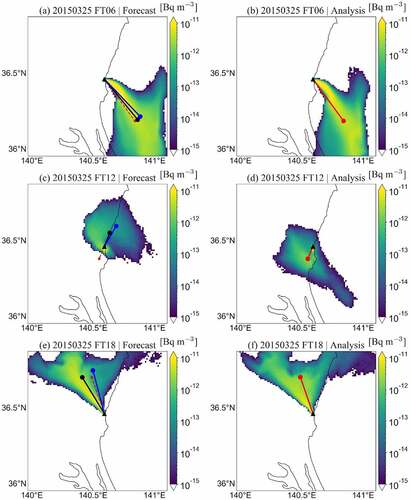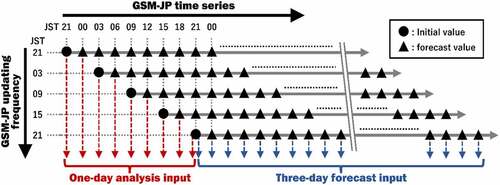Figures & data
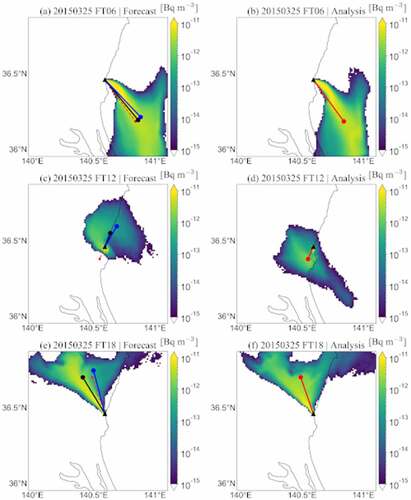
Figure 1. Computational domains for WSPEEDI-DB calculations. The colors indicate the ground height above sea level. The triangle denotes the release point, which is the location of the nuclear science research institute, JAEA.
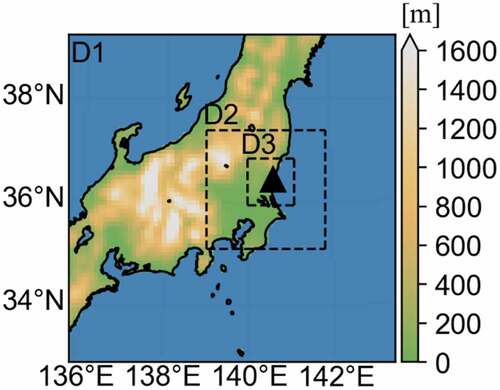
Table 1. Configuration of WRF for each domain.
Table 2. Configuration of GEARN for each domain.
Figure 3. Configuration of the analysis and forecast outputs used in the Bayesian machine learning. FTx indicates the 6-hourly forecast periods. The data in the analysis output, which is unavailable at the time of forecast calculation in DAY0, is shown as a red dashed-line.
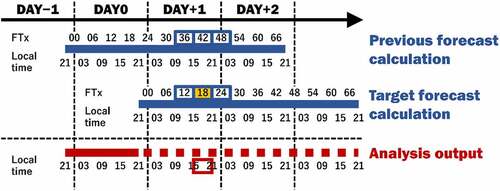
Figure 4. Schematic regarding the method for evaluating the uncertainty of the plume direction. Gm shown as a vector (black) with the release point as the origin and the rectangle area in (a) indicate the most probable point and probability distribution of the plume centroid calculated using the Bayesian machine learning, respectively. The solid and dashed green vectors in (a) and (b) are the one forming the maximum angle Φ with Gm and its line symmetrical one with respect to Gm, respectively. Gf and Ga in (b) indicate the vectors (blue and red, respectively) of the plume centroid from the forecast and analysis outputs, respectively. The predicted uncertainty of the plume direction is defined as the angle Φm to Gf, which is shown as a central angle with a light blue fan-shape in (c).

Table 3. Coefficients of determination R2 for the x- and y-components of the plume centroid estimated using Bayesian machine learning. The coefficients calculated from the training and test data are shown in the table.
Figure 5. Boxplot of Φa (analysis) and Φm (model) for each FT. The top and bottom of the boxes indicate upper and lower quartiles, respectively; the horizontal bar in the box and an open circle show median and mean values, respectively; the upper and lower whiskers show the maximum and minimum angles. Respectively, except for outliers described outside the upper whisker.

Figure 6. Time series of Φa (analysis) and Φm (model) from FT6 to FT36 on (a) May 24, (b) February 10, and (c) March 25, 2015. Black triangles and red circles indicate the angles from the analysis output and the Bayesian model, respectively.

Figure 7. Heatmap showing the percentage of data contained in each domain. The horizontal and vertical axes show the values of Φa (analysis) and Φm (model), respectively. The value plotted in each domain indicates the percentage.
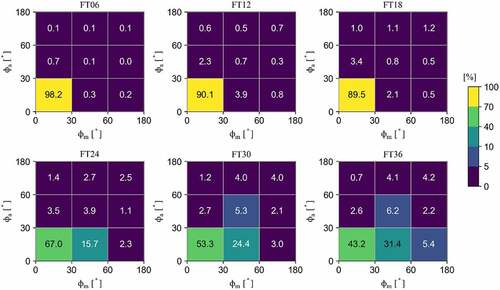
Figure 8. Schematic regarding the judgment of (a) ‘misses,’ (b) ‘hits’ for high uncertainty, (c) ‘hits’ for low uncertainty, and ‘false alert.’ the fan-shape colored as light blue indicates the uncertainty of forecasted plume direction.
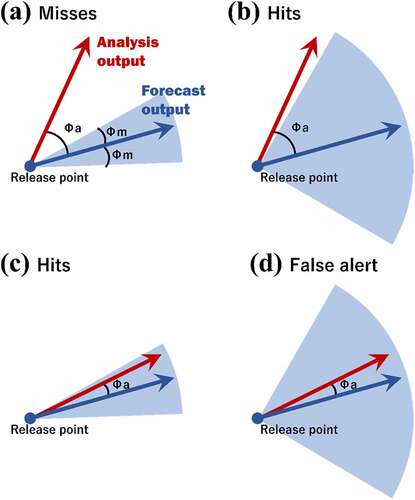
Figure 9. Horizontal distribution of 137Cs concentration from FT06 to FT18 on March 25, 2015. The triangle symbol shows the location of the release point. The left and right columns of the figure show the results of the forecast and analysis outputs, respectively. Black and blue lines in the left column describe the vector indicating the plume centroid (shown as a filled circle at the line end) by the forecast output and the Bayesian model, respectively. The dashed red line in the left column and the red line in the right column describe the vector indicating the plume centroid by the analysis output.
